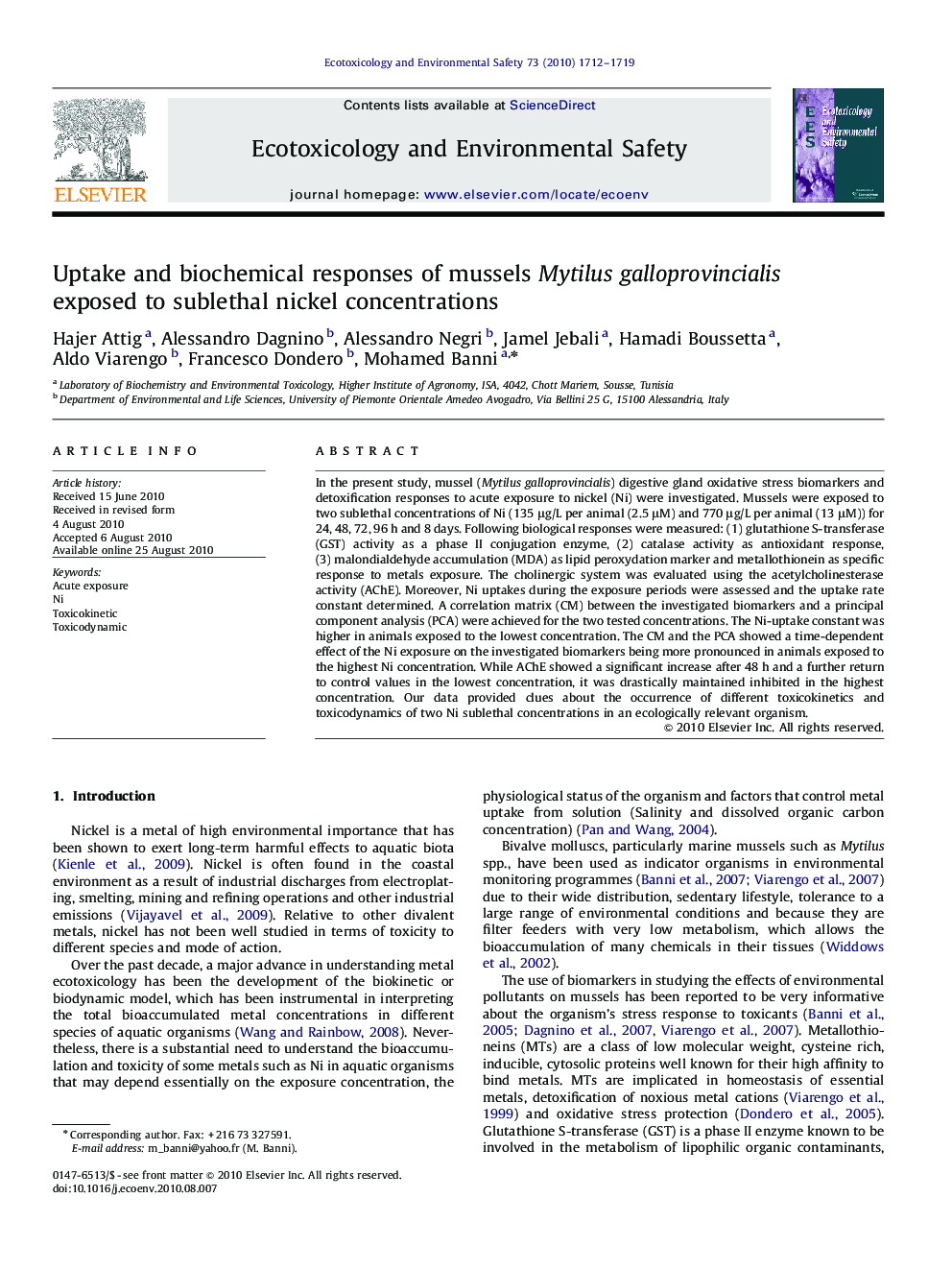| Article ID | Journal | Published Year | Pages | File Type |
|---|---|---|---|---|
| 4421729 | Ecotoxicology and Environmental Safety | 2010 | 8 Pages |
In the present study, mussel (Mytilus galloprovincialis) digestive gland oxidative stress biomarkers and detoxification responses to acute exposure to nickel (Ni) were investigated. Mussels were exposed to two sublethal concentrations of Ni (135 μg/L per animal (2.5 μM) and 770 μg/L per animal (13 μM)) for 24, 48, 72, 96 h and 8 days. Following biological responses were measured: (1) glutathione S-transferase (GST) activity as a phase II conjugation enzyme, (2) catalase activity as antioxidant response, (3) malondialdehyde accumulation (MDA) as lipid peroxydation marker and metallothionein as specific response to metals exposure. The cholinergic system was evaluated using the acetylcholinesterase activity (AChE). Moreover, Ni uptakes during the exposure periods were assessed and the uptake rate constant determined. A correlation matrix (CM) between the investigated biomarkers and a principal component analysis (PCA) were achieved for the two tested concentrations. The Ni-uptake constant was higher in animals exposed to the lowest concentration. The CM and the PCA showed a time-dependent effect of the Ni exposure on the investigated biomarkers being more pronounced in animals exposed to the highest Ni concentration. While AChE showed a significant increase after 48 h and a further return to control values in the lowest concentration, it was drastically maintained inhibited in the highest concentration. Our data provided clues about the occurrence of different toxicokinetics and toxicodynamics of two Ni sublethal concentrations in an ecologically relevant organism.
